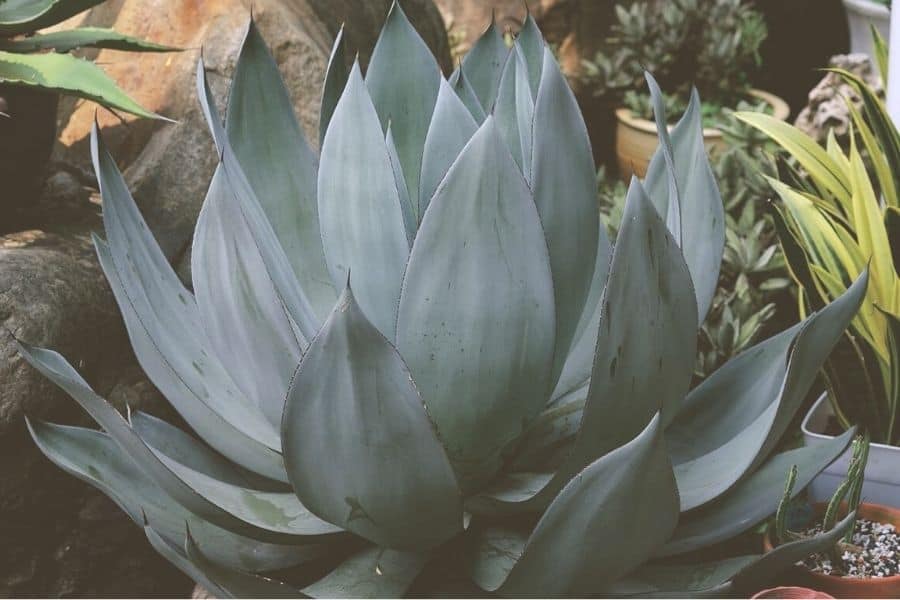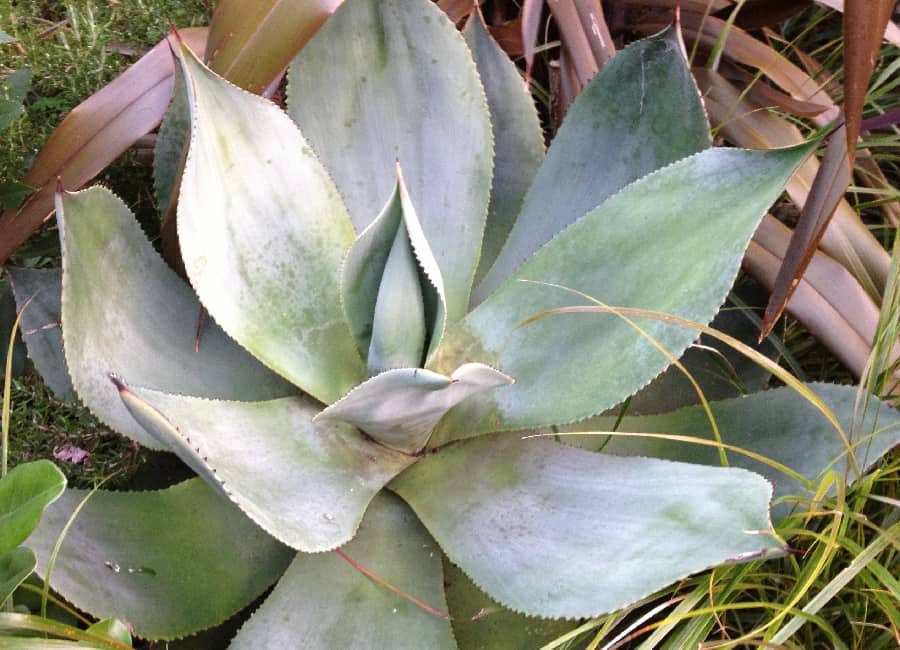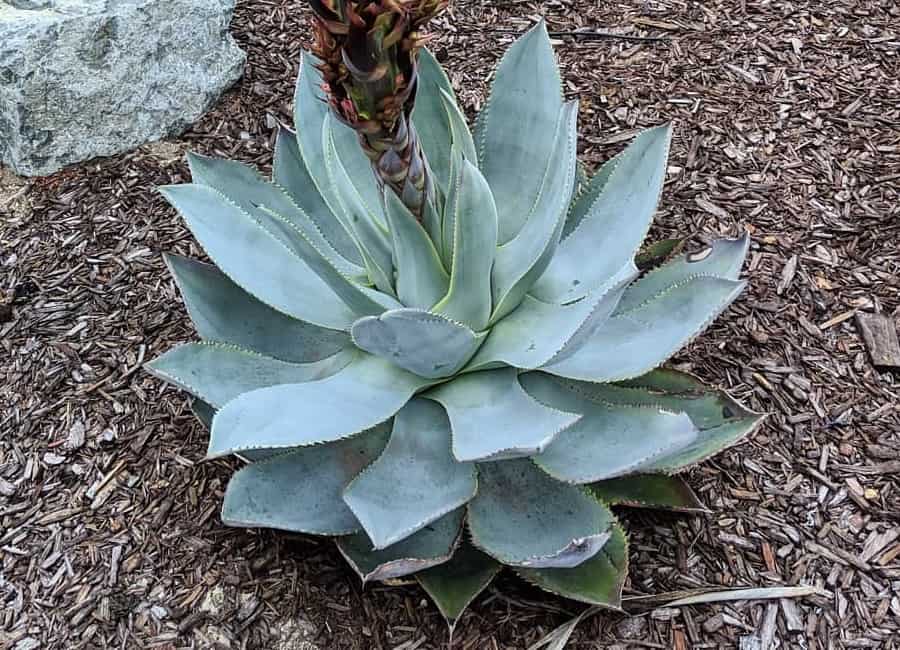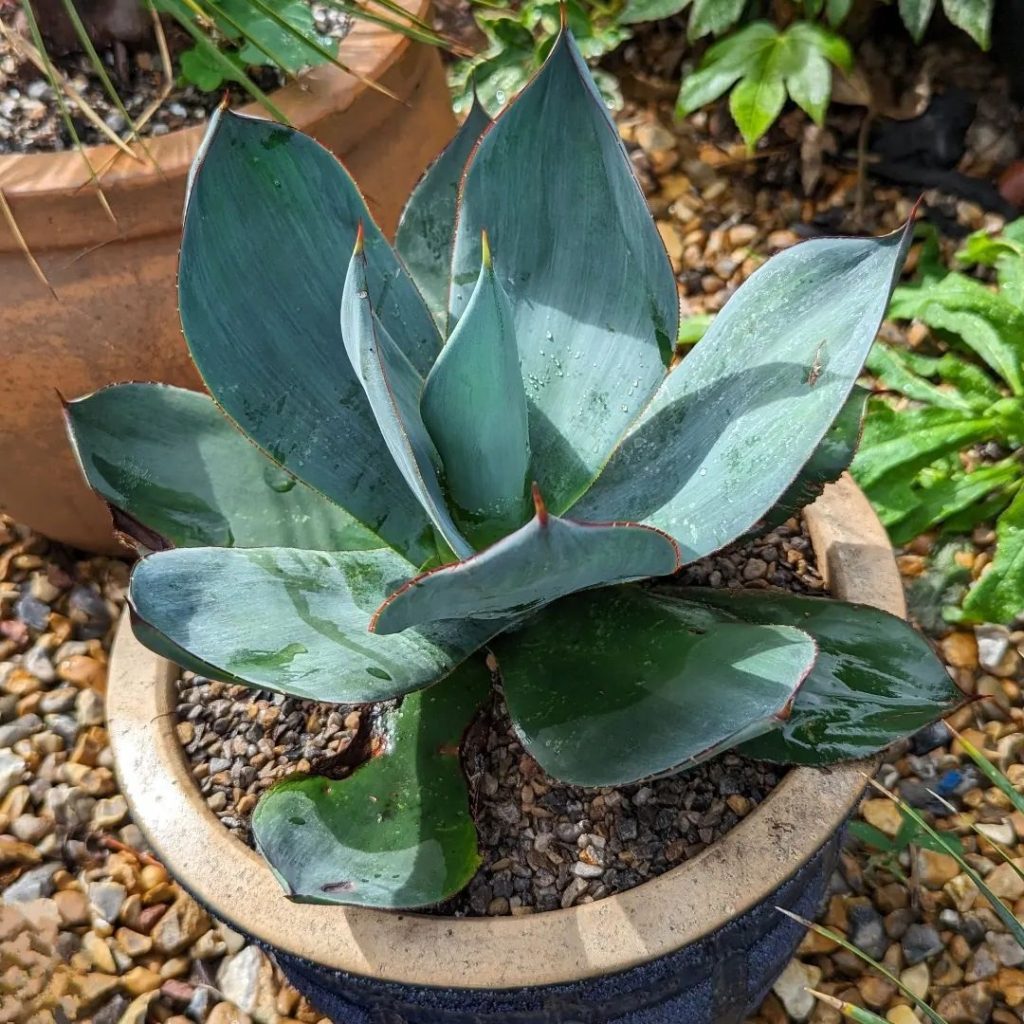Agave celsii Nova: The Desert Plant That’s Taking Over Instagram
You’ve probably noticed some stunning blue succulent rosettes popping up all over your Instagram feed lately. The striking, geometric shapes and vibrant coloring of the Agave celsii Nova have made this desert dweller an internet sensation. But it’s more than just a pretty plant pic – this hardy, low-maintenance succulent is inspiring serious cravings among houseplant collectors and succulent fans. Keep reading to find out why the Agave celsii Nova craze isn’t just a passing Instagram fad.

Contents
About Agave celsii Nova
The Agave celsii Nova, also called the New Celsi Century Plant, is a solitary rosette-forming succulent native to Mexico. It grows up to around 2 feet tall and 3 feet wide, with broad, fleshy bluish-gray leaves that have deep imprints and tiny black spines along the edges. This tulip-shaped agave provides a gorgeous pop of cool blue color that makes it highly ornamental.
Despite its sharp, spiky appearance, the Nova is actually a relatively fast-grower compared to some other agave varieties. It’s also known to bloom at a younger age, sending up a tall flower spike around 6 feet high with pale yellow blossoms.
So what makes this humble desert plant such an Instagram darling? Its bold, symmetric form and chalky blue hues are simply stunning, especially when grown in aesthetically-pleasing pots or planted in striking groupings. Agave celsii Nova has major visual impact while still being easy to care for – the perfect plant for capturing those envy-inducing houseplant shots.
Related Post:
80+ Types of Agave Plants With Pictures and Names
Agave celsii Nova Care Guide
Light
Like most agaves, the Nova thrives in direct, bright sunlight. An ideal spot is a south or southeast-facing window. During the summer months, you can move it outside to an open patio or balcony for some extra rays. If you lack sufficient natural light, you’ll need to use a grow light to keep this sun-lover happy.
While the Nova loves light, be cautious of the intense afternoon sun which can scorch its fleshy leaves. Providing some light shade during the hottest part of the day is recommended.
Water

This drought-tolerant plant doesn’t need frequent watering. Only water when the soil has completely dried out, and be extra frugal with water during the winter dormancy period. Make sure the pot has sufficient drainage holes to prevent soggy soil.
As a general rule, water every 1-2 weeks in spring and summer, gradually cutting back to every 3-4 weeks in fall and winter. Adjust as needed based on your specific environment and the plant’s growth.
Soil
Agave celsii Nova needs a well-draining soil mix to prevent issues like root rot. A quality succulent or cactus soil blend made with ingredients like peat moss, perlite, and coarse sand is ideal. You can also amend a regular potting mix by adding some extra perlite, pumice or chicken grit to increase drainage.
Fertilizer
Agave celsii Nova is not a heavy feeder. An application of a balanced, liquid succulent fertilizer once or twice during the growing season is plenty. Too much fertilizer can cause stretching and weak growth.
Temperature
The Nova prefers hot, dry conditions similar to its native desert habitat. It can tolerate temperatures from around 30-100°F and does best in USDA Hardiness Zones 8-10. In colder climates, bring potted plants indoors when temps dip below freezing.

Potting & Repotting
The Agave celsii Nova has a very slow growth rate, so it rarely needs repotting. Only upsize the container when the plant becomes drastically rootbound, generally every 3-5 years.
When repotting a young Nova, choose a new pot just 1-2 inches wider than the previous one. Make sure the pot has a drainage hole to prevent soggy soil. Use a well-draining cactus or succulent potting mix.
Take care when transplanting not to bury the rosette too deeply or cover the base of the stem. The plant’s neck should rest slightly above the soil line to prevent rot issues. Top-dressing with pebbles or pea gravel around the stem can help with airflow.
Pests and Problems
Agaves are generally free of major pest and disease problems when their care needs are met. However, there are a few potential issues to watch for:
- Agave Snout Weevils – These beetle-like insects can lay eggs in the plant, causing rot and collapse over time. Check for signs of damage and treat with an appropriate insecticide if needed.
- Rot – Overwatering or poor drainage can lead to rot in the fleshy Nova leaves and root system. Ensure well-draining soil and avoid overwatering.
- Sun Damage – While full sun is best, intense hot afternoon rays can scorch the Nova’s thick leaves. Provide filtered shade during peak sun hours.

Agave celsii Nova Propagation Methods
The Agave celsii Nova can be easily propagated from offsets (pups) or seed:
- Pups: Gently detach any basal offsets from the mother plant, allowing the offset to dry for a few days so the end calluses over. Then plant the offset in a succulent soil mix and water sparingly until roots form.
- Seed: Sow seeds in a succulent seed starting mix. Keep warm, and moist, and provide bright but indirect light until seedlings emerge in 3-8 weeks. Transplant into individual pots once large enough to handle.
With its show-stopping looks and easy-care requirements, it’s no surprise the Nova has achieved houseplant stardom on Instagram lately. This captivating little succulent is sure to keep stealing hearts (and garnering those double taps) as people discover its charms. Who knows, the Agave celsii Nova may just inspire you to up your houseplant pic game!
